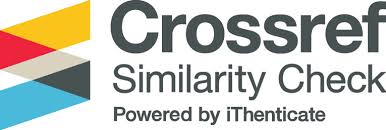Effect Effect of Black Rice Bran on the Pharmacokinetics Profile of Glibenclamide in Hyperglycemic Rats
Abstract
Black rice bran (BBH) which contains anthocyanins has the ability to lower blood sugar. In therapy diabetes mellitus (DM) it is possible that BBH is used together with the oral antidiabetic Glibenclamide (Gli). Glibenclamide, a weak acid, is well absorbed in the gastrointestinal tract. The absorption of BBH is also good under acidic conditions. So, it is necessary to study the pharmacokinetic interactions between Gli and BBH.
The study was designed using a one-way completely randomized design of ten (10) hyperglycemic rats, divided into two groups. Group I rats received Gli 5 mg / kgBW treatment, and group II received Gli 5 mg/kgBW along with BBH 50 mg / kgBW. Sampling was carried out at 1, 2, 4,6, 8 and 24 hours after treatment. Gli levels in the blood were determined by Liquid Chromatography/Mass Spectroscopy (LC/MS).
The results showed that in the absorption phase, giving BBH with Gli did not affect the Gli profile in terms of parameters Tmax, Cmax and AUC0-inf. Likewise, in the distribution and elimination phases in terms of parameters VD, ClT and elimination half-time (t1/2). So that the provision of BBH does not affect the pharmacokinetic parameters of Gli in hyperglycemic rats.
Keywords:
Anthocyanins; black rice bran; Glibenclamide; pharmacokinetic profile
Published
2020-11-30
Section
Articles













